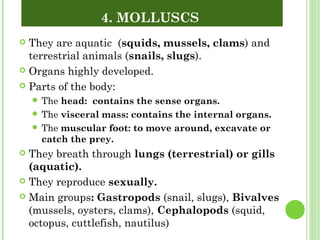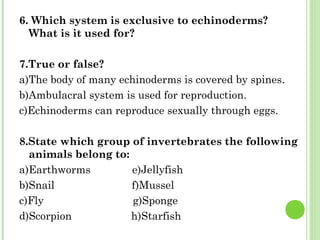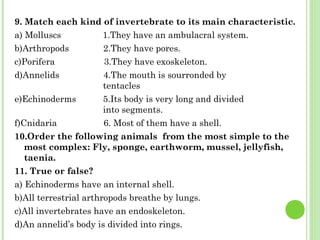This document provides an overview of invertebrate classification and examples. It discusses the main groups of invertebrates including porifera, cnidaria, worms, molluscs, arthropods, and echinoderms. Key details provided include characteristics of each group, examples of animals within each group, and how they reproduce and breathe. Activities at the end test comprehension of the content through matching, ordering, true/false, and drawing exercises.




















